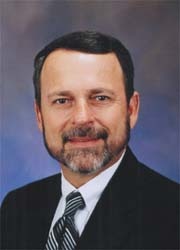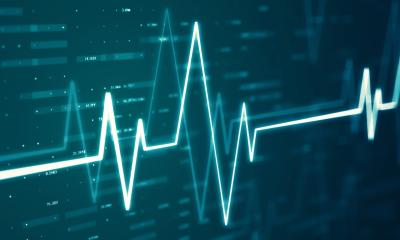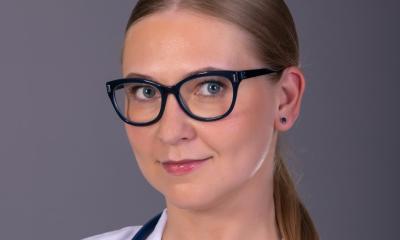Disaster!
In August last year, Hurricane Katrina smashed into the USA's Gulf Coast. Within 36 hours a swathe of Louisiana had become a disaster zone.

Just two weeks after the event John Matessino, President of the Louisiana Hospital Association, Baton Rouge, described the transformation of its healthcare services and heroic efforts of healthcare workers, many of whom also suffered personal losses
With the arrival of Hurricane Katrina in southeast Louisiana, the mission of the Louisiana Hospital Association took a 180-degree turn from its normal advocacy role to running an emergency operations centre.
More than two weeks later, I am still astounded by the whole experience — the evacuation of hospitals; the untiring efforts of healthcare workers; the networks created for communications and supplies; the support from all the hospitals in the state; the help and assistance from hospitals, associations and organisations throughout the country; and the loss of life both in our state and in Mississippi.
The association staff performed a vital role in operations at the state’s Office of Emergency Preparedness Command Centre, working ceaselessly to assist with hospital evacuations, find available hospital beds around the state, assess damage to hospitals and coordinate patient transfers and resources. The offices of the LHA were transformed into a situation room.
During the evacuation of the hospitals and the days that followed, the walls of our office were plastered with pages from flip charts with names of hospitals that needed to be evacuated, medical and related suppliers from all over the nation, and lists of supplies each hospital needed. Each time we were informed that a hospital was evacuated of patients, staff and family, there would be a moment of relief only to return once again to a heightened level of intensity.
The LHA staff, like many everywhere around the state, were doing things and providing services we never dreamed of performing. There were hysterical calls from hospital employees taking care of infants, to calls for help from hospitals needing supplies to either sustain them until they could be evacuated, or to weather the storm.
The calls for fuel, generators, security, medical supplies, food and water, clean linens and other supplies just kept coming. The staff here pulled every rabbit out of the hat to secure and deliver the needed supplies and services. With much help from our friends, I am happy to report we were successful on many of the requests to help all hospitals, whether they were members of our association or not.
Several days after the storm, I was part of a Public Health Service healthcare assessment team that flew by helicopter around New Orleans and some of the areas affected by the storm north of Lake Pontchartrain. To witness such a devastating blow to our state left indelible impressions.
However, more than the effects of the storm, I was impressed by the spirit of the healthcare professionals and others working in the areas we visited. They were exhausted but were coping and taking care of patients.
One example was in Chalmette, La., an area just southeast of New Orleans, where the storm surge nearly immersed all of St. Bernard Parish. The local hospital in Chalmette had water into the second floor of a two-story building where I witnessed a boat tied to a second story windowsill left after the evacuation.
The only piece of ground in the entire parish that did not flood was the administration building of the ExxonMobil refinery. At the refinery, a makeshift clinic had been established by a few physicians and two registered nurses from the hospital. They had lost everything in the storm but were relentless in their commitment to care for people in need.
In the aftermath of the storm, our office was in communication with many of the hospitals that needed to be evacuated due to the floods. What these healthcare workers and hospital staff did for their patients, the families and each other is amazing. Evacuations took almost four days because of the difficulties encountered in security, communications and problems of evacuating a flooded area.
Temperatures at that time exceeded 95 degrees outside during the peak of the day and more than 100 inside.
One can only imagine the experiences these people faced in caring for their patients. In the end, nearly 2,200 patients and 9,000 staff and guests were evacuated.
The LHA has also been helping hospitals and family members locate patients who were transferred to hospitals all over the nation and established a service on our Web site. Many people have been calling in tears either relieved to know their loved one is safe or that at least someone is trying to help.
One evening, I stayed until 1 a.m. taking call after call from many desperate family members. The American Hospital Association and other state and metropolitan hospital associations have also assisted in this effort. Hundreds of families have been reunited with patients that were evacuated, and the number is climbing every day. This effort will continue as long as necessary.
While I think we have waded through the initial chaos from the storm, there are mountains to scale on the road to recovery. Thousands of healthcare workers affected will need our continued support. Many have lost everything.
I cannot say enough about the efforts of the entire team at the LHA that was supported by several members of both the Metropolitan Hospital Council of New Orleans and ShareCor, our shared-service company, which have had several employees that have been displaced from their homes and evacuated as well. Finally, I want to thank the hospitals and other healthcare organisations, suppliers and others that have given so unselfishly to the recovery effort.
EH Editor’s note: A charity - named The Care Fund - has been established by Louisiana’s healthcare workers to help colleagues affected by Katrina to rebuild their lives. For our European readers who want to contribute to this fund, please go to: http://www.thecarefund.net/thecarefund/index.html
* John Matessino’s article was first published in Modern healthcare (http://www.modernhealthcare.com/page.cms?pageId=1300&potId=WE)
01.03.2006






